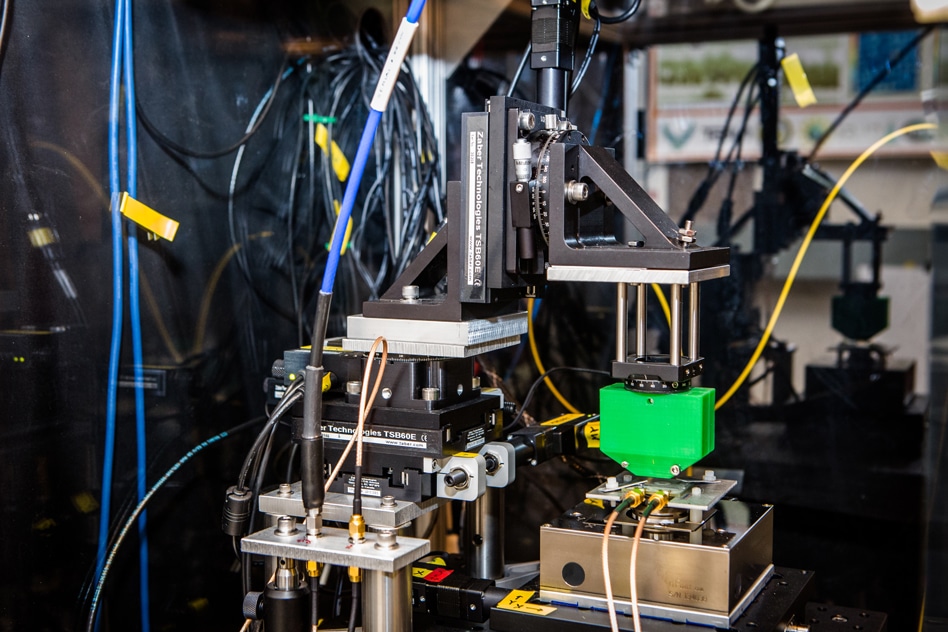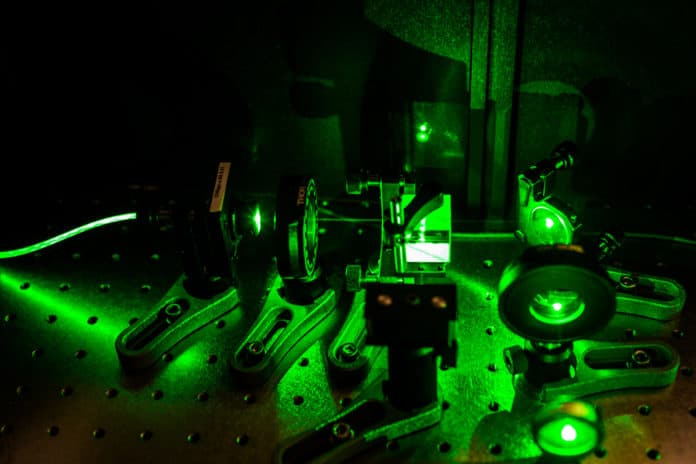Sensing static magnetic fields with high sensitivity and spatial resolution is critical to many applications in fundamental physics, bioimaging, and materials science. Even more beneficial would be full vector magnetometry with nanoscale spatial resolution.
Now, MIT scientists have come up with a technique that offers great precision not only up and down but sideways as well. Scientists devised the technique using a platform that probes magnetic fields with high precision, using tiny defects in diamond called nitrogen-vacancy (NV) centers.
These defects contain two adjacent places in the diamond’s orderly lattice of carbon atoms where carbon atoms are missing; one of them is replaced by a nitrogen atom, and the other is left empty. This leaves missing bonds in the structure, with electrons that are extremely sensitive to tiny variations in their environment, be they electrical, magnetic, or light-based.
According to scientists, this newly developed technique could be useful in applications as diverse as mapping the electrical impulses inside a firing neuron, characterizing new magnetic materials, and probing exotic quantum physical phenomena.
More interestingly, the method has solved the problem by using a secondary oscillator provided by the nitrogen atom’s nuclear spin. The sideways component of the field to be measured nudges the orientation of the secondary oscillator.

By knocking it marginally off-hub, the sideways part initiates a sort of wobble that shows up as an intermittent variance of the field lined up with the sensor, therefore transforming that opposite segment into a wave design superimposed on the essential, static attractive field estimation. This would then be able to be numerically changed over back to decide the greatness of the sideways segment.
Yi-Xiang Liu said, “The method provides as much precision in this second dimension as in the first dimension, while still using a single sensor, thus retaining its nanoscale spatial resolution. In order to read out the results, the researchers use an optical confocal microscope that makes use of a special property of the NV centers: When exposed to green light, they emit a red glow, or fluorescence, whose intensity depends on their exact spin state. These NV centers can function as qubits, the quantum-computing equivalent of the bits used in ordinary computing.”
“We can tell the spin state from the fluorescence. If it’s dark, producing less fluorescence, “that’s a ‘one’ state, and if it’s bright, that’s a ‘zero’ state. If the fluorescence is some number in between then the spin state is somewhere in between ‘zero’ and ‘one.’”
The needle of a simple magnetic compass tells the direction of a magnetic field, but not its strength. Some existing devices for measuring magnetic fields can do the opposite, measuring the field’s strength precisely along one direction, but they tell nothing about the overall orientation of that field. That directional information is what the new detector system can n provide.
In this new kind of compass, we can tell where it’s pointing from the brightness of the fluorescence, and the variations in that brightness. The primary field is indicated by the overall, steady brightness level, whereas the wobble introduced by knocking the magnetic field off-axis shows up as a regular, wave-like variation of that brightness, which can then be measured precisely.
Liu explained, “Unlike some other systems that require extremely low temperatures to operate, this new magnetic sensor system can work well at ordinary room temperature. Moreover, it’s feasible to test biological samples without damaging them.”
“The technology for this new approach is already available. You can do it now, but you need to first take some time to calibrate the system.”
“For now, the system only provides a measurement of the total perpendicular component of the magnetic field, not its exact orientation. Now, we only extract the total transverse component; we can’t pinpoint the direction. But adding that third-dimensional component could be done by introducing an added, static magnetic field as a reference point. As long as we can calibrate that reference field, it would be possible to get the full three-dimensional information about the field’s orientation, and “there are many ways to do that.”
Amit Finkler, a senior scientist in chemical physics at Israel’s Weizmann Institute, who was not involved in this work, says, “This is high-quality research. … They obtain sensitivity to transverse magnetic fields on par with the DC sensitivity for parallel fields, which is impressive and encouraging for practical applications.”
Finkler adds, “As the authors humbly write in the manuscript, this is indeed the first step toward vector nanoscale magnetometry. It remains to be seen whether their technique can indeed be applied to actual samples, such as molecules or condensed matter systems. However, The bottom line is that as a potential user/implementer of this technique, I am highly impressed and moreover encouraged to adopt and apply this scheme in my experimental setups.”
The new approach is described today in the journal Physical Review Letters.
